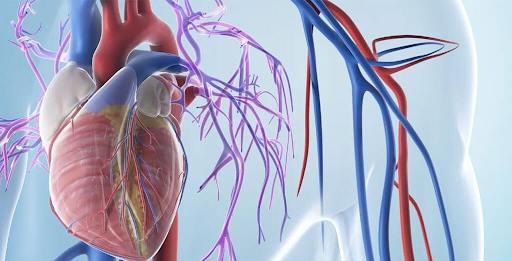Life Beyond Blockages: The Complete Guide on Coronary Bypass Surgery (CABG)

Heart issues usually start slowly, and the symptoms are ignored or misplaced by the person. When the blood vessels that supply the heart become blocked or constricted, it can influence oxygen to the heart muscle. That is where cabg bypass surgery becomes necessary. The overall aim of this operation is to increase the supply of blood to the heart by creating a new route for it to follow through the clogged arteries. It’s a procedure that can save your life and is normally the recommendation if other treatments such as medication or dietary change prove inadequate.
- What Occurs During the Procedure: Coronary bypass surgery is a surgical procedure that is performed using general anesthetic. During the process, a healthy vessel is harvested from a different area of the body, commonly the chest or leg. The vessel is implanted to bypass the occluded artery and provide a new route for blood flow to the heart. The heart can be halted during the procedure, and a heart-lung machine pumps the blood and oxygen through the body. The procedure takes a few hours depending on how many blockages need to be bypassed.
- Who Needs Coronary Bypass Surgery: These are for patients who have over one blocked vein, experience chest pain even when at rest, or experienced a heart attack. Those who cannot get sufficient relief from stents or other minor procedures are good candidates as well. Preoperative procedures such as angiograms and stress tests are first done to examine the degree of blockage and determine whether bypass surgery will be the best solution.
- How to Prepare Before the Surgery: Preparation for the bypass surgery is a process under the guidance of the healthcare professionals. Tests on the patient will be conducted, and part of the medication being taken by them will be temporarily halted. Fasting before the surgery is required, and patients are requested to arrange for support in the home for the recuperation period. Any diseases or infections to be cured before the operation to prevent complications at a later stage.
- Recovery in the Hospital: They are taken after the procedure to the intensive care unit where they are monitored. Machines will monitor heart rate, oxygen level, and blood pressure. Tubes will be inserted in an effort to assist breathing, drain fluids, or administer medication. The majority of patients are released within a matter of days to a normal hospital room where they engage in slow, assisted movements to get their strength back. Hospital stay typically is around one week with no issues.
- Risks and Complications: Some individuals tend to develop infection or an abnormal heartbeat. Others may be forgetful or unable to concentrate for a short period. Such types of side effects are generally better with time and good control. More serious complications such as stroke or heart attack are uncommon but can occur and are more likely with older patients or disease patients.
- Emotional Impact of the Procedure: It can be physically exhausting to have a radical heart surgery. It scares some patients, makes them anxious, or depressed when recuperating. It is natural, and emotional recovery is not any less important than physical recovery. Support from family and friends and mental health professionals can be a boon for speedy recovery to normal life. Having more open communication and seeking help when required may ease this emotional stress.
- How Long Will the Bypass Last: The new arteries used in the bypass can last for years if the patient takes a healthy lifestyle. Even they are not exempt from occlusion. Smoking, inattention to food, inactivity, or poor management of underlying illness like diabetes or hypertension can cut short the life of the bypass. Sustained follow-up tests and a genuine attempt to look after oneself can help make the new vessel continue to work well for decades.
- Difference Between Bypass and Stents: While both procedures attempt to encourage more circulation, they are quite different from one another. Stents are small tubes placed inside the artery to avoid clogging. They are placed with a less aggressive method and are effective for fewer blockages. Bypass surgery is more effective for several or widespread blockages and provides longer results in most scenarios. Doctors decide between these two depending on the patient’s condition, medical history, and extent of the damage to the arteries.
- Back to Normal Living: The majority of individuals can go back to their normal preoperative way of living two to three months following surgery. Driving, job seeking, and even exercise are slowly allowed following discharge from the doctor. The body must not be overstressed during recovery. Heeding the body and its doctor’s recommendations guarantees safe and incident-free recovery.
- The Purpose of Cardiac Rehabilitation: Cardiac rehabilitation is a specialized service that hastens recovery and aids it. Rehabilitation includes exercise conditioning, education, and counseling. Professional assistance is administered in sessions under professionals who track progress and adjust routines based on the specific needs of individual patients. Rehab patients recover more quickly and are more optimistic regarding their future health.
- Being Informed and Vigilant: Ask the patients to know as much as possible about their disease. The acquisition of warning signs, drug usage, and emergency measures allows them to take care of themselves even more. Open-ended questioning provided on follow-up and involvement in one’s own care will prevent future complications and enable patients to be assured.
- Support from Family and Friends: A good support system can work magic on the process of recovery. It will help their mood improve and recovery accelerate if they get assisted by family members in everyday tasks, have their spirits lifted, or simply sit with them and keep them company. Family members also tend to be trained in assisting and recognizing danger signs if complications arise. Emotional assistance at this point is equally important, no less than material assistance.
In conclusion, coronary bypass surgery is a life-changing operation. Though the recovery and surgery process could be draining, control with the proper information and attention is manageable. Staying intelligent in making intelligent lifestyle modifications and performing healthy routines will protect the heart for an extended period of time. Being one’s own boss when it comes to health is the greatest saying in cardiac care.







